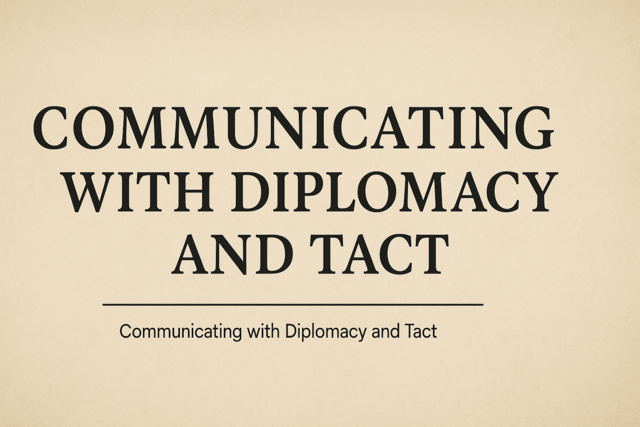Developing Educational Case Studies
Case studies can be used in education as a teaching tool. Many students learn better using real-life examples, and case studies can be an effective way to learn in the classroom.
Case studies have a history of being used in business schools, law schools, medical schools, and other master programs. These cases can come in different forms, with some being basic "what would you do?" type questions, and some being very detailed and requiring data analysis.
Assignments and homework for these types of studies usually require students to answer open-ended questions about a possible solution to a problem. Usually these projects are done by a group of students, as group learning is often more effective.
What Are Case Studies?
A case is basically a story. A case recounts events or problems in a way that students can learn from their complexities and ambiguities. The students can learn from the original participants in the case, whether it is business people, doctors, or other professionals.
The students are able to take over a case, and dissect key information in order to find solutions to the problems. This allows students to be able to:
1. Determine pertinent information
2. Identify the problem and its parameters
3. Identify possible solutions
4. Form strategies and ideas for action
5. Make decisions to fix the problems
The History of the Case Study Method
The founder of the case study method was Christopher Langdell, who attended Harvard Law School from 1851-1854. He was very studious, and spent most of his time in the library. This is when he started to formulate the case method.
At the time, law schools used the Dwight Method of teaching, which was a combination of lecture, recitations and drills. This method focused highly on memorization, and didn't allow for much actual learning, just rote repetitions.
Langdell's method was completely different. He required his students to only read cases, and to draw their own conclusions. To help them, he published sets of cases with a short introduction.
Narrative Case Studies
Narrative case studies use a comprehensive history of a problem, along with the several parts of the typical case study, to teach using the case method. With this method students try to find better solutions to problems, and find ways to analyze why their chosen solution is best.
An example of a narrative case study is the Tylenol cyanide scandal. In 1982 seven people died after ingesting Tylenol tablets laced with cyanide.
Almost immediately Tylenol's market share dropped from 37% to 7%. Johnson & Johnson, the parent company had to work quickly to save the product. They reintroduced the product with tamper resistant packaging and a large media campaign.
Johnson & Johnson was successful. The Tylenol brand recovered and regained customer trust.
The Tylenol Scandal case study details everything that happened from beginning to end. It also details each step J&J took when turning the scandal around�both positive and negative steps.
This case study is now used in business, marketing, crisis management and other disciplines to help them solve their own problems. They can look at what J&J did to solve their problems, and use that information to fix their own issues.
As a teaching tool, this case study allows the students to analyze each step Johnson & Johnson went through, and whether or not any other solutions were possible.
Decision-Forming Case
A decision-forcing case doesn't provide an outcome, and therefore forces the students to determine an outcome on their own. Often these cases have an epilogue, which completes the story.
The formats of these cases can vary. They can be standard written cases, PowerPoint presentations, movies or movie clips, or even TV or news stories. Regardless of the type of case, they all:
-
llustrate the issues typical to the type of case study
-
Show theoretical frameworks
-
Leave out assumptions
-
Show realistic ambiguities and tensions.
Common Case Elements
Most cases, whether legal, business, or other, have the same common elements. These are:
1. A decision maker who has a problem that needs to be solved.
2. A description of the context of the problem.
3. Data that supports the study, which could include interviews, documents or images.
Case studies can be done individually, but are usually done in a small group so students can problem solve together as a team.
The Case Study Method
The case study method is two-parted. One part is the case itself, and other part is the discussion of the case. Case studies are chosen for teaching based on how rich the narrative is, and whether the people in the study are required to make a decision or solve a problem.
When using case studies, the focus is not on the data or the analysis. The students analyze the case and try to find ways to find solutions and solve problems. This method is most often used in groups, with a focus on classroom discussion.
When students are given a study by a teacher, they should attack each case with the following checklist.
1. Thoroughly read the case and formulate your own opinions before sharing ideas with others in your group or class. You must be able to identify the problems on your own, as well as be able to offer solutions and alternatives. Before the study is discussed with the group, you must be able to form your own outline and course of action.
2. Once you have a clear understanding of the case, you can share your ideas with other members of your group.
3. Open discussion of the case and listen to the input of others in your group and class.
4. Reflect back on how your original ideas changed as a result of the group discussion.
Teaching the Case Method
Professors have several ways to use case studies in the classroom. The first way is as an adjunct to normal lectures. A lecture might discuss a certain facet of business, and the case study can be used to backup the information learned in the lecture.
This type of teaching doesn't require large case studies, and can get by using excerpts and other extractions. The benefits of this method are that it only needs little preparation, and is a great way to introduce case studies into the classroom.
The second way is to use the case studies to challenge the student's solutions, and help them formulate new strategies. This is the typical case study method. Students work together to formulate solutions and conclusions, and allow students to learn from each other.
Gaining Skills With The Case Method
The case method is an excellent way for students to learn new cognitive skills, as well as improve their analysis and evaluation skills. Here is a list of the skills that can be improved, and how the case method helps this process.
Knowledge � This is the student's ability to remember information and ability to recall it.
Comprehension � This is the student's ability to understand what they are learning. The case method helps this by using examples in a real-world context.
Application � This is the student's ability to use their knowledge in new ways. This could mean new rules, ideas or theories. The case method helps students understand how these ideas and theories are used in the real world.
Analysis � This is the student's ability to break down information so it can be better understood. Since analysis is the basis of the case method, this skill is greatly improved.
Synthesis � This is the student's ability to form new ideas. Case studies help this skill by requiring them to identify new information and concepts. This is developed during group activities and discussions.
Evaluation � This is the student's ability to judge information for a particular reason. Again, this skill is a hallmark of the case study method, and the use of cases will help improve the student's evaluation skills.
Case Method Advantages
The largest advantage of the case study method is that students must actively and openly discuss the principals of the study. This helps develop their skills in:
-
Problem solving
-
Analysis, both quantitative and qualitative
-
Decision making
-
Dealing with ambiguities
Case Method Criticisms
While the case study method has been seen as a very successful way of learning, it does have its criticisms. Here is a list of some of the drawbacks of the learning method.
1. Students often fight for airtime, and may not fully think through their thoughts. Many students want to be first, and place more importance in that than being right. This results in analysis that is superficial and not well thought-out.
2. Students in business management courses don't always have the same background experience, and this can contribute to issues with experience.
3. The background information provided for the case analysis is often limited to whatever was supplied with the case.
4. If cases are too old, they may no longer be relevant. Cases that are older than 10 years shouldn't be used if possible. This is particularly the case with business studies, since changes occur quite frequently in the business world. For example, case studies that detail companies before the Internet are often out of date. You wouldn't want to study Barnes & Noble without knowing how eBooks affected their bottom line.
5. The case study method is not a good way to learn the technicals of finance and accounting. Not every MBA student has a strong background in accounting or finance, and vice versa. Furthermore, students don't always attend business school at the same time in their careers. Many students get their MBA's while in their 20's, while other students wait until they are in their 30's or 40's.
6. With the case method, there isn't a right or wrong answer. This can cause students to leave the lesson without key takeaways. In addition, this method cannot work for areas that have unique answers�this is why the case method would never work in physics or mathematics.
Those who disagree with the total case method teaching method believe the best alternative is a balance between cases and lectures.
The most recent iteration is a combination of both. They offer lectures to learn the fundamentals, and cases to determine whether or not the students understand the fundamentals enough to apply them to real-world situation.
The Case Study Method in Business School
Most top business schools use the case study method, including Harvard Business School. When students are given a case, they are required to be the decision maker, and they must read the study and identify the problems.
Once the problem has been identified, the student must analyze the situation and find solutions that can solve the problem. There can often be several possible solutions.
Students work in teams to solve the cases, discussing each facet of the case with their classmates. The teacher or instructor guides the students when necessary, and will often suggest courses of action when necessary.
Case Studies in Psychology and Social
Sciences
Case studies are used in just about every discipline, from business, to the arts, and education. But case studies are most prevalent in psychology and the social sciences, where case studies form a strong basis for all other clinical and non-clinical research.
If you are studying psychology, a part of your education will include the use of case studies. Case studies are how we learn and expand our knowledge, and how we build on older ideas and theories and attempt to make them better.
The Most Well-Known Psychological Case Studies
One of the best ways to learn about and better understand psychological case studies is to read and familiarize yourself with the most well-known case studies. These are the studies that every psychology student will learn about.
John-John
The John-John case was a pioneering study about gender and sexuality. This is one of those unique cases that cannot be recreated.
John-John focused on a set of twin boys, both of whom were circumcised at the age of 6 months. One of the twin's circumcisions failed, causing irreparable damage to the penis. His parents were concerned about the sexual health of their son, so they contacted Dr. John Money for a solution.
Think!
What makes the John/John case study so valuable?
What can be learned about the psychological case study method itself?
Dr. Money believed that sexuality came from nurture, not nature, and that the injured baby, Bruce, could be raised as a girl. His penis was removed and he was sexually reassigned to become a girl. Bruce's name was changed to Brenda, and his parents decided to raise him as a girl.
In this case, Dr. Money was dishonest. He believed that gender could be changed, which has since been proven false. Brenda's parents were also dishonest, stating that the surgery was a success, when in fact that wasn't the case.
As Brenda grew up, she always acted masculine and was teased for it at school. She did not socialize as a girl, and did not identify as a female. When Brenda was 13 she learned the truth, and was incredibly relieved. She changed her name to David, and lived the rest of her life as a male.
Jill Price
Jill Price was believed to have a condition called hyperthymesia, which gave her a remarkable memory. She could remember the tiniest details, such as what she ate for lunch 10 years prior on a random Monday.
This condition caused her great harm because she focused on all the negative events in her life, even the small ones like derogatory remarks. Price participated in the study hoping it would help her deal with her condition.
Through the study, it was determined that Price wasn't a memory whiz, and that her abilities were completely blown out of proportion. She wasn't able to memorize lists of words or names. Her memory was focused only on events that were relevant to her. For example, she could remember famous dates, but only if they were relevant to her or her life.
Doctors also did brain scans, and through the study, determined that she had a form of obsessive-compulsive disorder, or OCD. Price was obsessed with the negative things that had happened to her in her life, and that obsession cause the increased memory in her instance.
Future research will have to be done to corroborate this theory.
H.M.
H.M., the initials of Henry Molaison, is probably the most important case study in the field of neuroscience. HM was in a bike accident at the age of 9, and it caused brain damage that resulted in seizures.
In an attempt to end his seizures, surgeons removed small slivers of his brain from the hippocampus, which we now know is the area of the brain that is critical to memory. As a result of the surgery, HM was left with amnesia. He was unable to form new memories, and had issues remembering old memories.
This case study was the basis for future studies of human memory. Because of this study, we know that memory has two parts that work together. One part is located in the hippocampus, which is where facts and memories are stored. This one study revolutionized the study of the brain and memory.
Phineas Gage
Phineas Gage was a railroad worker who was injured in a workplace accident. He was packing gunpowder into a rock, and a spark caused the tampering iron to shoot through his cheek into his skull. His frontal lobe was damaged, but he survived the accident and was able to talk and walk immediately after.
The study was done about his personality, which immediately changed. He became short tempered and angry. He lost his friends, family, and his job. This study allowed researchers to study the frontal lobe and how it is involved in higher mental functions. It also proved that the brain was the basis for personality and behavior.
Genie
By now you are probably familiar with Genie case, and why it was such a breakthrough case study. Of all the case studies that exist, it is Genie that has allowed the most inroads to be made in the psychological field.
Genie was a feral child. She was raised in completed isolation, with little human contact. Because of the abuse she withstood, she was unable to develop cognitively. From infancy she was strapped to a potty chair, and therefore never acquired the physicality needed for walking, running and jumping.
If Genie made a noise, her father beat her. Therefore, she learned to not make a noise. Once she was found, researchers studied her language skills, and attempted to find ways to get her to communicate. They were successful. While she never gained the ability to speak, she did develop other ways to communicate. However, the public soon lost interest in her case, and with that, the funds to conduct the study.
However, her case was extremely important to child development psychology and linguistic theory. Because of her, we know that mental stimulation is needed for proper development. We also now know that there is a "critical period" for the learning of language.
The Most Well-Known Case Studies in Sociology
Sociology is a science much like psychology. In sociology, the study is of social behavior, how it originated, and how it exists today. Like most sciences, it isn't perfect, and therefore benefits from the use of case studies.
Sociological case studies have helped us identify problems in our culture, and have helped define possible solutions. Here are some of the most well-known studies in sociology, the ones that defined and shaped the field.
Fast Food Nation
Fast Food Nation is a book by Eric Schlosser, about how the fast food industry is related to the American life.
Americans love their fast food. It is said that most toddlers are able to identify the golden arches of McDonald's before they are able to read. Fast Food Nation uncovered some disturbing facts about the fast food industry. He discovered that fast food has widened the gap between rich and poor, and has contributed to the obesity epidemic.
His study details how much of this happened, and most of it is very unsettling.
The study also touched on other sociological issues, such as farming and ethics. Since fast food restaurants needed more beef than ever, cattle farmers would find ways to make bigger cows, and would find ways to own more cattle. This often led to overcrowding and poor care of the animals.
Milgram Obedience Studies
Stanley Milgram did a study from 1960 to 1974 in which he studied the effects of social pressure. The study was set up as an independent laboratory. A random person would walk in, and agree to be a part of the study. He was told to act as a teacher, and ask questions to another volunteer, who was the learner.
The teacher would ask the learner questions, and whenever he answered incorrectly, the teacher was instructed to give the learner an electric shock. Each time the learner was wrong, the shock would be increased by 15 volts. What the teacher didn't know was that the learner was a part of the experiment, and that no shocks were being given. However, the learner did act as if they were being shocked.
If the teacher tried to quit, they were strongly pushed to continue. The goal of the experiment was to see whether or not any of the teachers would go up to the highest voltage. As it turned out, 65% of the teachers did.
This study opened eyes when it comes to social pressure. If someone tells you it is okay to hurt someone, at what point will the person back off and say "this is not ok!" And in this study, the results were the same, regardless of income, race, gender or ethnicity.
Think!
Why are sociological case studies necessary?
Name a sociological case study that has changed the way we think about culture today.
Nickel and Dimed
Nickel and Dimed is a book and study done by Barbara Ehrenreich. She wanted to study poverty in America, and did so by living and working as a person living on minimum wage.
She set up her experiment with three rules.
1. When looking for a job, she is unable to use her education or skills.
2. She had to take the highest paying job she gets, and do her best to keep it.
3. She had to take the cheapest housing she could find.
She lived in three cities in Florida, Maine and Minnesota.
Through her experiment, she discovered that poverty was almost inescapable. As soon as she saved a little money, she was hit with a crisis. She might get sick, or her car might break down, all occurrences that can be destructive when a person doesn't have a safety net to fall back on.
It didn't matter where she lived or what she did. Working a minimum wage job gave her no chances for advancement or improvement whatsoever. And she did the experiment as a woman with no children to support.
This study opened a lot of eyes to the problem of the working poor in America. By living and working as the experiment, Ehrenreich was able to show first-hand data regarding the issues surrounding poverty. The book didn't end with any solutions, just suggestions for the reader and points for them to think about.
The Culture of Fear
This study was written in 1999 by Barry Glassner, a professor of sociology at the University of Southern California. The study investigated why Americans are so engrossed with fear.
The study examined the organizations that caused the fear, and how they profited from the anxiety that resulted. Politicians, television news and magazine programs, were all found guilty of peddling fear, which causes people to worry needlessly and cost billions of dollars.
The study investigated why Americans have so many fears today, and why Americans are more fearful now than they were 20 years ago. Life is not more dangerous now than it was 20 years ago, and yet Americans are more afraid.
Glassner discovered that there are businesses and organizations that actually profit from these fears, and as such, find ways to create them. This of course leads to wasted money, time and resources.
Much of the blame is placed with the news media, who constantly inundates us with news stories that will increase their ratings. This is called the media-effects theory.


























